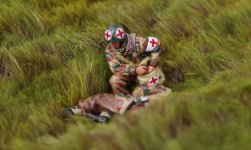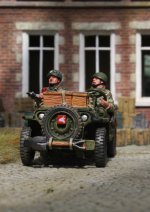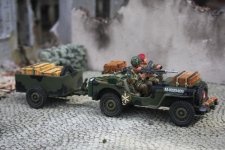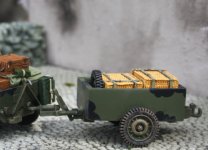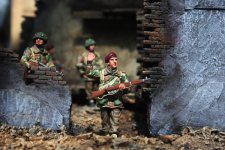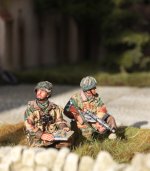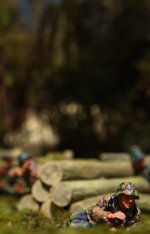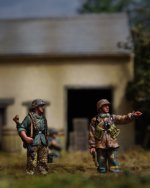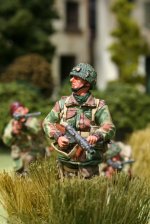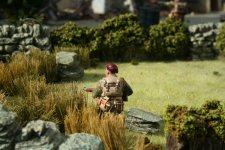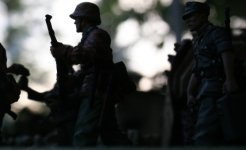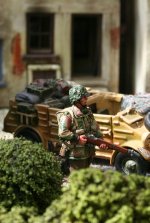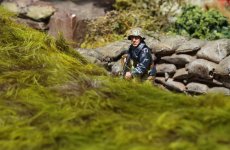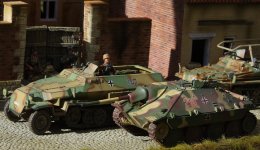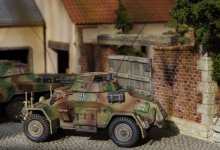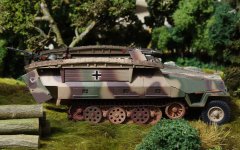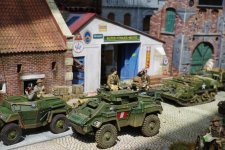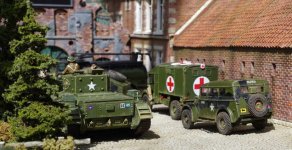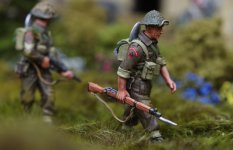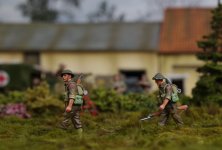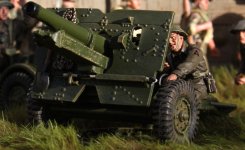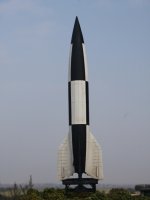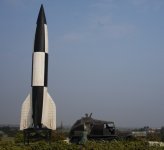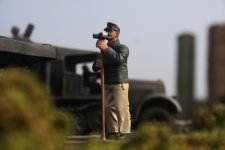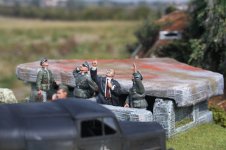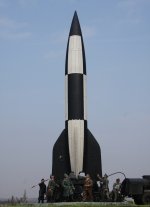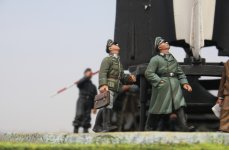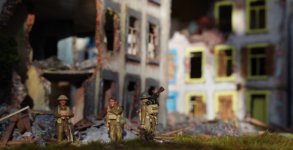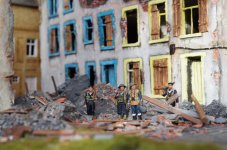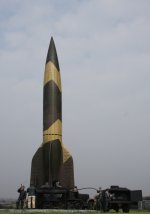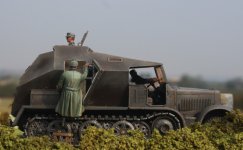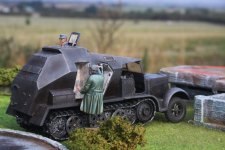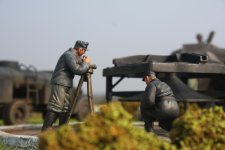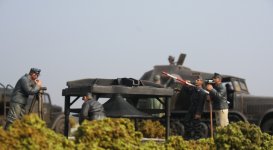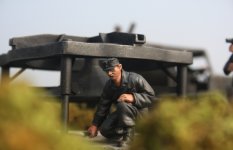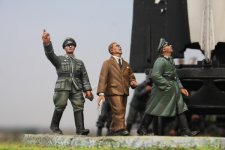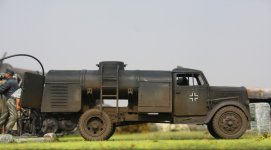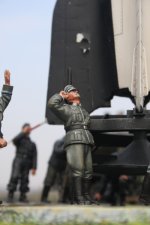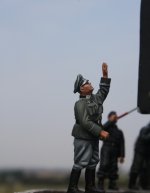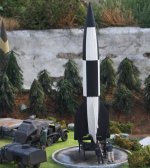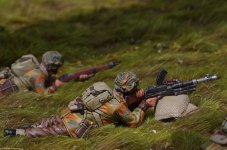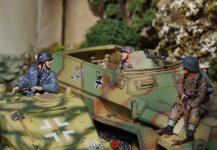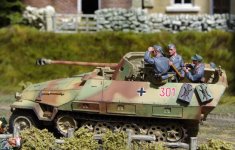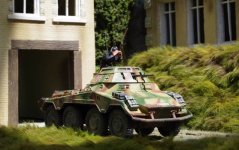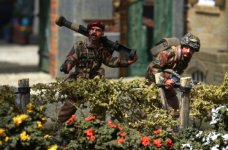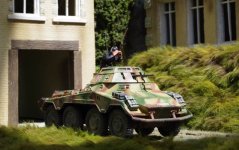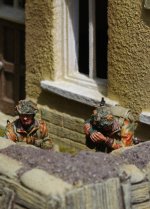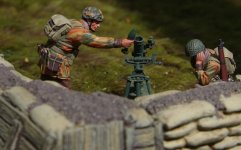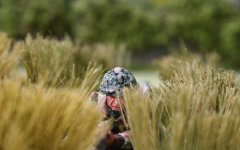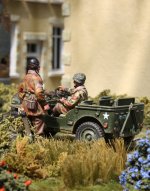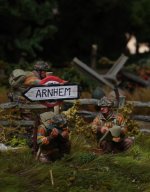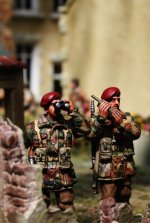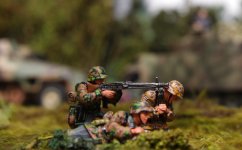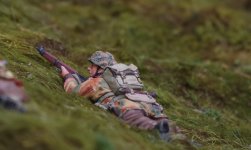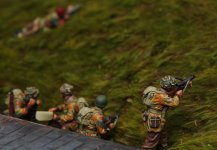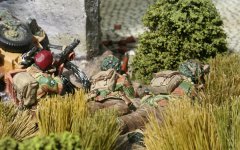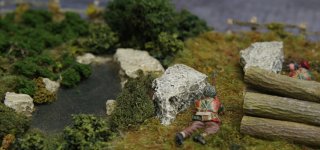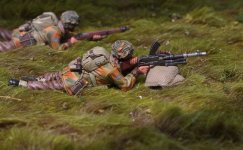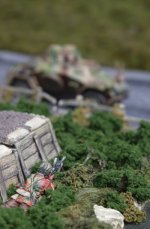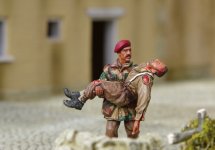panda1gen
Colonel
- Joined
- Jul 29, 2005
- Messages
- 8,138
Ref: Arnhem - 1944: The Airborne Battle by M. Middlebrook
There was a meeting, well described in other books, at which the two men argued. Hackett was senior in service as a brigadier, but Major-General Urquhart had left instructions that Hicks, older and with longer infantry experience than Hackett, was to take priority in command over the cavalryman Hackett in the unlikely event of both Urquhart and Brigadier Lathbury, the obvious successor, becoming casualties. Unfortunately, neither Hicks nor Hackett had been informed of Urquhart's wishes. Hard words were exchanged, although Hackett did not directly challenge the position of Hicks in command of the division. He extracted a clearer idea of the situation and then departed.
Basically, instead of directing his brigade on to the northern part of Arnhem, he was to proceed on a step-by-step basis, first of all capturing that Koepel high ground and then approaching Arnhem on the left flank of what remained of the 1st Parachute Brigade, which had just ended its Monday battle, but still had some effective strength left for another effort.
So, if the 4th Parachute Brigade could get up to the Koepel area quickly, there might still be the opportunity to mount a two-brigade attack into Arnhem towards the bridge.
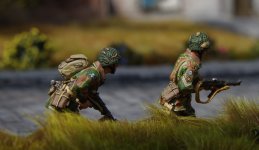
There was one more matter. Hackett had earlier asked Lieutenant-Colonel Mackenzie if he could have one of the Airlanding Brigade battalions to replace his detached 11th Battalion, with the 7th King's Own Scottish Borderers clearly in mind.
This battalion was already in the process of moving towards its predetermined 'phase two' position in the original plan. This was in the same direction as the 4th Parachute Brigade advance, but not as far.
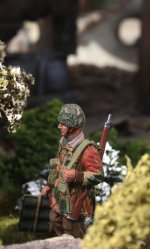
Hicks, probably reluctantly, told Hackett that he could take the KOSB under command, but that the battalion also had to continue to perform its role of protecting LZ-L near its next position for the arrival of the third-lift gliders, a condition which considerably reduced Hackett's ability to employ the battalion in his brigade's advance. The KOSB would remain unaware of the change until the next morning.
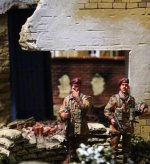
It was 1.30 a.m. on the Tuesday when Brigadier Hackett returned to his headquarters.
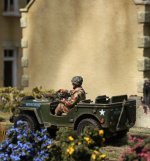
Five and a half miles away in Arnhem, the 1st and 3rd Battalions and the South Staffords, with the 11th Battalion coming up later, were about to mount their last attack.
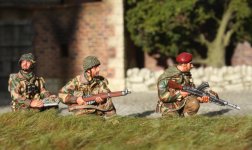
There was a meeting, well described in other books, at which the two men argued. Hackett was senior in service as a brigadier, but Major-General Urquhart had left instructions that Hicks, older and with longer infantry experience than Hackett, was to take priority in command over the cavalryman Hackett in the unlikely event of both Urquhart and Brigadier Lathbury, the obvious successor, becoming casualties. Unfortunately, neither Hicks nor Hackett had been informed of Urquhart's wishes. Hard words were exchanged, although Hackett did not directly challenge the position of Hicks in command of the division. He extracted a clearer idea of the situation and then departed.
Basically, instead of directing his brigade on to the northern part of Arnhem, he was to proceed on a step-by-step basis, first of all capturing that Koepel high ground and then approaching Arnhem on the left flank of what remained of the 1st Parachute Brigade, which had just ended its Monday battle, but still had some effective strength left for another effort.
So, if the 4th Parachute Brigade could get up to the Koepel area quickly, there might still be the opportunity to mount a two-brigade attack into Arnhem towards the bridge.

There was one more matter. Hackett had earlier asked Lieutenant-Colonel Mackenzie if he could have one of the Airlanding Brigade battalions to replace his detached 11th Battalion, with the 7th King's Own Scottish Borderers clearly in mind.
This battalion was already in the process of moving towards its predetermined 'phase two' position in the original plan. This was in the same direction as the 4th Parachute Brigade advance, but not as far.

Hicks, probably reluctantly, told Hackett that he could take the KOSB under command, but that the battalion also had to continue to perform its role of protecting LZ-L near its next position for the arrival of the third-lift gliders, a condition which considerably reduced Hackett's ability to employ the battalion in his brigade's advance. The KOSB would remain unaware of the change until the next morning.

It was 1.30 a.m. on the Tuesday when Brigadier Hackett returned to his headquarters.

Five and a half miles away in Arnhem, the 1st and 3rd Battalions and the South Staffords, with the 11th Battalion coming up later, were about to mount their last attack.



